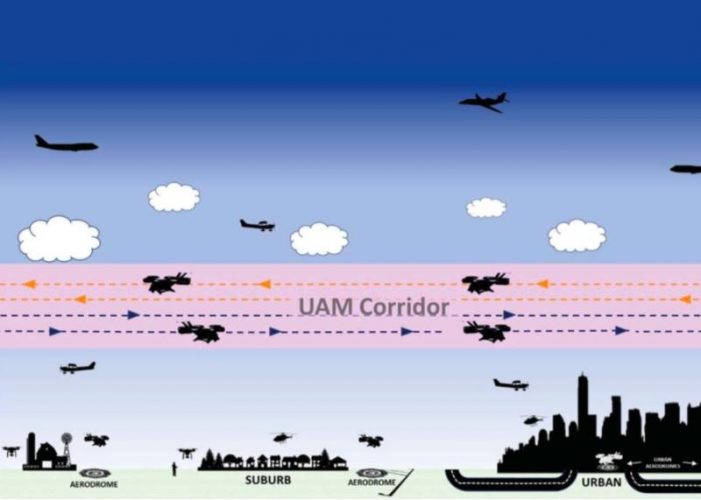The US Federal Aviation Administration (FAA) has released an initial Concept of Operations (ConOps) for Urban Air Mobility. The 30-page document describes how urban air taxi operations will operate safely in the US National Airspace System. Developed in association with the National Aeronautics and Space Administration (NASA) and industry partners, it addresses early stage, low density and low complexity UAM operations (UML 1-2). It includes the first release of an air traffic management architecture with dedicated UAM corridors as shown in the illustration. This first version is the result of coordinated activities in 2019 and guided discussion sessions at NASA Ames Research Center (ARC) in February 2020.
The document defines the UAM operating environment in the context of manned and unmanned air traffic management. It considers how operations may be conducted the future and anticipates test, validation and verification activities before becoming a more established description. It sets out the roles and responsibilities of airspace users and service providers and details the different activities necessary for safe UAM operations to take place. It considers different stakeholder needs and demand capacity balancing when applying UAM corridors. It applies concepts already developed for Unmanned Traffic Management (UTM) including use of a digital and networked system based on a service-oriented architecture with many of the same design patterns found in UTM.
According to FAA Chief Scientist Steve Bradford: “UAM ConOps Version 1.0 is initial stage of work in progress and the concept will be continuing to mature and modified through ongoing government and industry stakeholder collaborations.”
NASA and Deloitte are due to deliver an updated version of the UAM ConOps for more mature operations (UML 4) in the future.
For more information visit:
https://nari.arc.nasa.gov/sites/default/files/attachments/UAM_ConOps_v1.0.pdf




